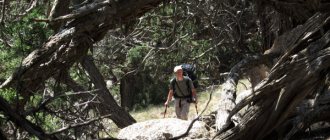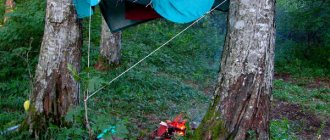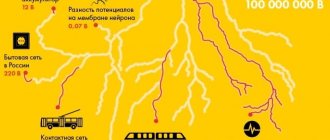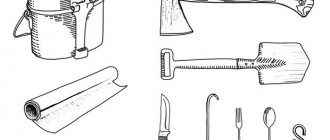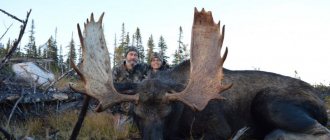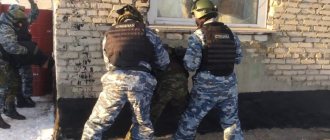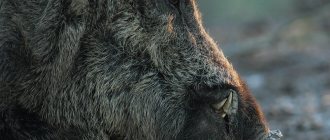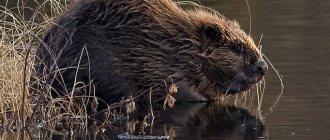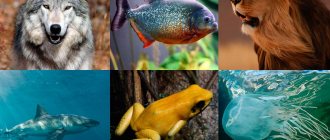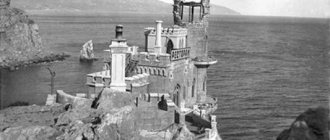When and under what circumstances can a wild animal attack a person?
- An animal can attack a person if it is cornered and has nowhere to escape, then it instinctively moves from defense to attack
- Some animals are very dangerous during the rut (mating time). All animals have different breeding seasons.
- Animals protect their offspring (a typical example is the attack of a bear)
- An animal has already tasted human flesh once, then it becomes a cannibal. He perceives humans as easy to catch prey, which is not as difficult to track as game.
- The animal is wounded (wounded animals almost always attack a person: a wounded boar is very ferocious, a wounded tiger or a wounded bear)
Are animals afraid of fire?
There is an opinion that dangerous wild animals are afraid of fire. It is not always so. In remote, uninhabited places, animals seeing the fire of a fire out of curiosity will definitely come to it. On the first or second night. Of course, they won’t come close to the fire, but they boldly approach thirty meters. We can include among the very curious animals that are attracted to the fire of a fire: bears, wolves, moose, and wild boars. Many dangerous animals are practically not afraid of fire at all (they do not perceive it as something outlandish); forest fires often occur in the forest, to which wild animals get used.
If you place a fire near a pond, then muskrats or beavers may swim towards the fire (they do not pose a danger).
Owls often fly over the fire.
Many animals, as mentioned above, come to the fire out of curiosity. If you notice an animal, do not be afraid of it. If an animal allows itself to be noticed, then it is not going to eat you))).
The noisiest animals, as a rule, are no less afraid of you than you are of them. If the animal is hunting, then you will not hear it approaching you and attacking (apply to tigers and bears). But still, the fire of a fire is a protective barrier that a wild animal will not climb!
Enemies, diseases, parasites, moose mortality
Among the various predators that attack moose, the most significant are wolves and brown bears, the former mainly in the low-snow parts of the range, the latter in the high-snow taiga regions.
An adult, healthy elk is difficult prey for a wolf; hunting it involves great risk for the predator: with a blow from the hoof of its front leg, the elk can break the head of the predator. Therefore, unless absolutely necessary, wolves do not attack elk. If there are other species of ungulates or livestock, moose are relatively rarely affected by wolves. In 17 European, Siberian and Far Eastern nature reserves in 1945-1949. recorded several hundred finds of remains of carcasses of wild ungulates torn to pieces by wolves, of which elk accounted for only 5%, although elk were very common animals in many reserves. In the Sikhote-Alin Nature Reserve, where, along with moose, there are numerous other species of ungulates, no wolf attacks on moose have been reported for many years. There are known cases when moose cows with calves in the summer without fear approached within 100 m of a wolf den with a brood or lived from summer to spring in the hunting area of a brood of wolves, without being attacked by these predators.
At the same time, if there is a lack of other food, wolves can be very dangerous for moose and the damage they cause to the population is sometimes very significant. In 70 wolf excrements collected in the Oksky Nature Reserve, moose remains were found in 77%. Remains of moose in the autumn-winter data on wolf feeding in the Darwin Nature Reserve (Rybinsk Reservoir, 1948-1951; 90 excrements) were found in 78% of cases. There, over the years, 11 moose calves and 10 adult moose torn by wolves were found in the summer; in winter, 9 and 12, respectively. Thus, of the total number of moose killed by wolves, young ones accounted for almost 50%. Wolves in the Kalinin region cause significant damage to moose.
Along with the young, which the wolf slaughters mainly at the moment when they leave the uterus, adolescents who have recently switched to an independent lifestyle seem to suffer more often than others, and among adults, it is mainly sick and emaciated animals. Wolves usually attack adult moose only in a pack, avoiding attacking from the front. Wolves, who specialized in hunting moose, subsequently attacked cattle and horses, taking the victim by the groin, and not by the throat, as usual (Kalinin region). Damage to moose from wolves is most noticeable during snowless and light snow periods of the year. In loose deep snow, it is difficult for wolves to take not only an adult elk, but also teenagers. In the last 1-2 decades, due to the intensive development of taiga regions in our country, cutting down continuous forests and laying roads, wolves have in some places penetrated into areas with very snowy winters, where they were not previously, and the harm from these predators to moose is increasing. There are known cases when wolves, who initially did not touch moose at all, then became accustomed to hunting these animals and slaughtered them in large numbers.
Elks suffer significant damage from brown bears, mainly in snow-covered taiga regions, especially in the spring, when predators emerge from their dens, often with high snow cover. Having no other sources of food, bears chase moose through the crust. The chase sometimes goes on for many kilometers. In the Lapland Nature Reserve in the spring, moose remains were found in the excrement and stomachs of bears in 35% of cases; in the summer and autumn, 7-9 times less often. In total, more than 20 cases of moose deaths from bears have been established here; There were 54% adult moose, 25-33% in the second year, 13-21% calves. Among the elk killed by the bear, one was pregnant with two calves, the other was killed during childbirth. In the Pechora-Ilychsky Nature Reserve, 10 cases of moose deaths from bears were discovered; Among the dead were 6 adults, 1 in the second year and 3 calves. Cases of moose deaths from bears have been reported in many other areas of the country. According to Kaplanov (1935), in the case of early spring, a bear can destroy most of the offspring of moose cows (Demyanka River basin). Obviously, in large numbers, bears can greatly inhibit the reproduction of moose. There are cases where moose have killed or injured bears that attacked them.
The importance of all other predators is apparently small, although some authors believe that wolverines in some places cause the same or even more damage to moose than bears. Young (up to 1-2 years old) and pregnant females, as well as wounded animals and severely emaciated moose, suffer the most from wolverines. Among the moose that died in the Pechora-Ilychsky Nature Reserve from wolverines, 4 were less than a year old (one lame), and of the adults (8), two were wounded by poachers; one was chased by a lynx for a long time before the wolverine attacked. In three cases, moose cows that were chased by wolverines were aborted; the fruit was eaten by wolverines. The bulk of elk were killed by wolverines in February - April through an ambush attack or as a result of an active chase. In the Lapland Nature Reserve, cases of wolverine attacks on moose have never been observed; the remains of moose in the excrement of these predators are the result of eating carrion. It is likely that in other parts of the range, the wolverine in relation to elk much more often plays the role of a scavenger than a real predator.
Lynx are usually considered to be enemies of moose, but these statements are poorly supported by factual data. In Sikhote-Alin and Altai there are no known cases of lynx attacks on moose, but there have been such cases in the Pechoro-Ilych Nature Reserve. In one case, remains of elk were found in tiger excrement in Sikhote-Alin; Among tiger prey in Sikhote-Alin, about 10% are moose. There are no reliable cases of attacks on moose by other predators.
No matter how hardy the elk were in relation to deep snow, nevertheless, during heavy snowy winters, especially if moose were pursued during them, there was a noticeable increase in mortality in the population. After the snowy winter of 1894/95 in the Kolyma basin, the moose were so exhausted by spring that “they could barely stand on their feet, and the calves were found dead from hunger.” A significant number of moose died in Siberia during the unusually snowy winter of 1913/14. In the Pechoro-Ilychsky Nature Reserve, where in some years there is snow, the cover in the wintering areas of moose reaches 110-120 cm or more, many moose become very skinny by spring. In especially snowy winters, mortality from wolverines increases, abortions of moose cows become more frequent, calves are born with low weight and weak, often dying soon; the number of young animals in the population decreases noticeably. After very snowy and long winters, elk calves calve in their wintering grounds, after which a large number of young ones apparently die during their migrations to the north.
Read: Growth, development and molting of reindeer
A prolonged spring with cold returns and snow, as well as autumn rains with frost and wind, are unfavorable for moose calves. In such years, the attrition among them increases. In summer, the most favorable conditions for good feeding of animals are in cool and relatively rainy weather and when there are fewer midges. In the case of abundant midges, some moose do not gain weight at all during this period.
Moose swim well, but cases of their death in water are far from rare. In the Pechora-Ilychsky Nature Reserve, over the course of a number of years, only 50 cases of moose deaths were identified, of which 60% were those who drowned, mainly when crossing fragile ice in the fall, 38% were those killed by predators and 2% from other causes. Most often, adult animals drown, since they break through the ice much more often and it is more difficult for them to get out of the ice hole. The greatest number of moose drown in years with prolonged ice cover during the autumn-winter migrations. In the Southern Urals, there have been cases of death of moose trying to swim across the ice drift of the river. Belaya, as well as those captured by a large flood in the floodplain of the river. Ural. When the bed of the Rybinsk Reservoir was filled with water in the spring of 1941, more than a hundred moose died: a thick layer of debris prevented the animals from swimming. In Buzuluksky Bor, one of the moose drowned, falling through a “window” in a peat bog. There are known cases when moose cows went swimming with very small moose calves and they drowned.
Moose diseases have been little studied. The largest number of indications relate to anthrax, the disease of which was noted in the Baltic states, the Mordovian Autonomous Soviet Socialist Republic and Western Siberia and Yakutia. In some cases, anthrax disease became widespread (usually it coincided with an anthrax epizootic among livestock) and a large number of moose died from it, as happened in the 18th-19th centuries. in the Baltic states in 1913-1914. in Yakutia. In the summer of 1950, the corpses of moose who died from anthrax were found in a number of areas of Western Siberia.
There are also known cases of elk suffering from rinderpest, necrobacillosis, emphysematous carbuncle, foot-and-mouth disease and scab. Foot and mouth disease was observed in moose in the Leningrad region. Cases of emphysematous carbuncle apparently occurred in Buzuluksky Bor. In the Komi Autonomous Soviet Socialist Republic, domestic reindeer have repeatedly suffered from necrobacillosis, but over the entire period only 3 cases of this disease in moose have been recorded. In Karelia, blood parasites from the family were isolated from the corpse of an elk. Piroplasmidae, causing hemosporidosis. In a number of cases, the reasons for the death of moose, as happened repeatedly in the Baltic states and in 1907 in the former. Olonets province remained unclear.
On the moose farm of the Pechora-Ilychsky Nature Reserve, gastrointestinal diseases of suckling calves are most common, which is associated with a violation of their natural feeding regime. There are known cases of death of newborns from colibacillosis. Elk calves suffer from pneumonia and are almost always fatal. Diseases of brucellosis and tuberculosis, various diseases of the respiratory tract and organs, chronic leukoencephalitis, actinomycosis, arthritis, and malignant tumors were observed in American moose. In captivity, there have been cases of death from necrotizing stomatitis caused by Actinomyces necrophorus. During a major rabies outbreak in Alberta, Canada, moose were also involved. For more than 25 years, “moose disease” has remained a mystery in the United States and Canada, resulting in the death of many moose. Its main symptoms are: animals lose fear of humans, become inactive, movements become uncertain, weakness and lethargy increase, the elk becomes completely or partially blind, stops responding to touch, eats little; then paralysis of the legs and death occur. There are a lot of ticks on people who are sick. Assumptions about the viral and bacterial origin of the disease have not been confirmed.
38 species of parasitic worms (trematodes, cestodes, nematodes), belonging to 16 families, were found in moose living in the Palearctic. Elk is an obligate host for a number of species (Alcefilaria abramovi, Nematodirella alcidis, Spiculopteragia alcis and Verestrongylus alces). Some species are known as parasites of moose throughout the entire range of moose in Eurasia (Paramphistomum cervi, larvae of Taenia hydatigena, etc.), while L. abramovi and Parabronema skrjabini are found only in Eastern Siberia, and Fasciola hepatica and Parafasciolopsis fasciolaemorpha only in Europe. Some helminths, which have a wide range of hosts, were observed in moose only in zoos.
The most severe helminthiases include trichuriasis (in zoos) and parafasciolopsosis (in natural conditions). When moose are infected with Trichocephalus whipworms, the intensity of the invasion, according to available data, often reaches 5,000 or more individuals, which leads to severe emaciation of animals or even death. With intense infestation of P. fasciolaemorpha (up to 19 thousand specimens), the normal functioning of the liver is disrupted, which can also cause the death of the elk. In some cases, the intensity of infection of moose with Paramphistomum cerui is very high - up to 9 thousand individuals. The larvae of the last two types of helminths develop in the aquatic environment. In dry years, when most small reservoirs dry up and moose concentrate near a limited number of deep-water floodplain reservoirs, abundantly inhabited by intermediate hosts, the intensity of infection of moose by these helminths increases markedly.
Common helminths of moose should also include: Elaphostrongylus panticola, Dictyocaulus, Echinococcus, Nematodirus, Ostertagia, Moniezia, etc. Many types of helminths of moose are common to farm animals. A number of helminth species that are widespread in moose, such as Wehrdikmansia cervipedes, are unknown in our moose. Among the various causes of moose mortality, the importance of helminthic diseases is generally low. Under natural conditions, high intensity of invasion occurs in relatively rare cases; In many moose, no helminths are found at all after a not too thorough examination.
Read: Reindeer habitats
A number of species of ciliates live in the rumen of moose. There is a known case of wild elk being infected with the skin tick Psoroptes equi. In zoos, the tick mite Acarus siro was found on moose, passing on to them from other ungulates. Of the two-winged parasites, the most important for moose is the nasopharyngeal botfly (Cephenomyia ulrichi; in the Far East it is represented by a special form of C. u. kaplanovi), apparently parasitizing the entire range of moose in Eurasia. The massive flight of this gadfly occurs in July-August, sometimes covering part of September. The larvae parasitize in the nasopharynx. In the spring in Sikhote-Alin they were found in all hunted moose. They fall out in June and early July (Pechora basin, Sikhote-Alin). With a large number (100 or more) of larvae, breathing and eating become difficult, there is a delay in molting and severe exhaustion, and in rare cases, the death of the elk (more often than not, one-year-olds die). The larvae develop well in dry soil, and therefore the most severe infection of moose with them occurs the next year after a dry summer. The elk's nasopharynx is also parasitized by the larvae of the gadfly Pharyngomia picta, which infects many species of ungulates. Skin gadflies (Hypoderma alces, N. acteon) as parasites of moose are known mainly from the western (Baltic) and eastern (Transbaikalia, Sikhote-Alin) parts of the range.
Horseflies (a large number of species), which are also carriers of anthrax, are very annoying to moose. Their bites cause bleeding wounds on the elk's hind legs. Mass flight of horse flies occurs from mid-June to August inclusive. The rest of the mass midges (mosquitoes, midges, biting midges) are of less importance than gadflies and horseflies, however, the summer stationary distribution, as well as the behavior of moose, largely depends on its abundance and activity; It also negatively affects the body condition of moose.
On elk killed in the Sikhote-Alin mountains, bloodsucker flies of the Hippoboscidae family were found in abundance, as well as ticks (mainly Ixodes persulcatus), from which the animals’ bodies were severely ulcerated. In a number of areas, elk are parasitized by the deer bloodsucker Lipoptenacervi.
Many herbivorous animals compete with moose to varying degrees. Muskrat (eats aquatic vegetation) and deer of the genus Cervus may have a more serious significance if their numbers are large. The reduction in the number of moose here, observed at the beginning of the 20th century, is associated with the breeding of red deer and a large number of other ungulate species in Belovezhskaya Pushcha. Indeed, in the 80s and 90s of the XIX century. moose in Pushcha multiplied greatly, but then, without significant human intervention, their numbers quickly began to decline: in 1898, 775 moose were counted in Pushcha, in 1901 - 700, in 1902 - 450, in 1904 .- 340, in 1907 - 222, in 1914 - 58. Living conditions for elk and other ungulates in this period in the Pushcha were not very favorable, since there was not enough good tree and shrub food. Among elk, there were often individuals with signs of degeneration, antlers without shovels, etc. The snowshoe hare is sometimes considered a serious competitor of the elk, which is hardly true, since the hare cuts willows at a lower level than the elk and feeds more on small growth .
If the number of moose is excessively high, regardless of the presence or absence of other species of ungulates, these animals themselves can deplete the winter food supply, and then their numbers begin to decline: some moose, obviously, migrate, the size of the offspring in the population decreases, and sometimes mortality increases. In the Oksky Nature Reserve (24 thousand hectares), by 1945 the density of the moose population reached 20.2 per 1000 hectares, but then decreased to 13-15.8, and by 1951 even to 8.8, and only after that it increased slightly ; in some areas in the west of the reserve it reached a record figure of 34.4. In the Prioksko-Terrasny Reserve (4.8 thousand hectares) in 1952-1955. There were an average of 20-25 moose per 1000 hectares; in the next two years this figure dropped to 16-17. In both of these reserves there were practically no serious competitive species of ungulates, since sika deer (Oka Reserve) and bison (Prioksko-Terrasny Reserve) were too few in number for this.
Similar phenomena were observed in other parts of the moose range, depending on the local situation: the distribution of winter and summer habitats, the state of food (especially winter), the depth of snow cover, the presence of competitive species and predators, shelters, places of escape from enemies and midges, etc. ... p, the critical value of the moose population could be different indicators: from 1-5 to 15-20 animals per 1000 hectares.
The capacity of land for elk is significant only at certain stages of forest succession, far from the climax. For example, in the first years after the destruction of a forest (by fire, as a result of logging or the proliferation of pests), these lands can only serve as a place for summer grazing of elk. Subsequently, as aspen, birch, goat willow and pine undergrowth appear, burnt areas and cutting areas become good winter pastures for elk, especially if there are areas of old coniferous forest nearby where animals can find shelter. This situation persists for 10-20 years (less in the south and longer in the north, where the forest grows more slowly), after which the forest begins to age for the elk, and not only the amount of winter food available to the animal decreases, but its quality also decreases. In the Arkhangelsk region, cutting areas in the first 10 years can only serve as a summer pasture for elk; in winter they are not used and become good winter habitats for this species from about 20 years of age, when protective conditions improve and there is a lot of wood food. After 40 years, the capacity of these lands for elk decreases again, as food becomes less available. In the province of Ontario (Canada), burnt areas are considered to be the most productive for moose in the relatively early stages of forest regeneration - up to 15 years, when their capacity reaches 16 moose per 1000 hectares. At the age of 16-30 years, the capacity of the regenerating forest is estimated at 8 moose per 1000 hectares, at 31-45 years - 4 heads, and after 45 years - 1. In snow-covered taiga areas, the dynamics of the moose population is determined not so much by the general food resources of the area, but reserves of tree and shrub food along the rivers where the winter camps of elk are located.
Read: Genus True deer (Cervus)
It is very likely that huge changes in the northern boundaries of the distribution of moose and the number of these animals in many areas, which were repeatedly noted in our country, were caused not only by the direct extermination and subsequent resettlement of moose from adjacent areas where they survived, but also stimulated by a change in the capacity of land in as a result of huge forest fires (Pechora basin, Western Siberia) and massive logging (central regions of the European territory of the USSR, the middle Volga basin). Climatic changes in this case, apparently, were only of secondary importance, although in some cases they could have a certain influence on this process (for example, promoting forest fires in dry years and preventing them in wet years, while complicating or favoring forest regeneration ). Thus, Wrangel, describing a trip in the summer of 1822 to the lower reaches of the Kolyma, points out in relation to one of its left bank tributaries - the river. Filippovka (flows into the Kolyma below the Bolshoy and Maly Anyuev): “The Filippovskaya Valley in former times was famous for its many elk, or Siberian moose. The great forest fire of 1770 dispersed them, but later, when the forest began to grow again, they appeared again and in a short time multiplied so much that in 1812 it was rare that a hunter did not kill half a dozen elk here. Ten residents from the village of Panteleevka shot seventy to their share. It is impossible to say for sure why the elk disappeared again after that, but the one I mentioned was the last happy hunt. During our stay, the appearance of elk in the Kolyma district was already considered a rarity and constituted an era in the hunting industry. There are still moose on Omolon and south of there, but in small numbers.” Buturlin, who visited the river basin. Kolyma in 1905, notes that in its delta the moose were “with the old people”; in the 70-80s they were not found here, but recently they have appeared again.
The composition of the moose population has been better studied than most other wild ungulates. Among newborns, the sex ratio fluctuates greatly, but, apparently, on average there is a slight predominance of males, although in certain areas and years the picture may be exactly the opposite. In 50 litters of elk calves from different regions of the country, there were 56% males and 44% females, including only 30% males in Buzuluksky Bor (17 calves), and 79% in the Pechora-Ilychsky Nature Reserve (14 calves). Later, in more material on the Pechora-Ilychsky Reserve, among young males there were 62%, females 38%. Where elk are not hunted, the sex ratio in the adult population usually levels out, approaching 1:1, often with some predominance of females. Obviously, this must depend on the higher mortality of males as a result of severe exhaustion during the rut, greater mobility and, apparently, less caution, as well as cases of death after fights over females1. In the Lapland Nature Reserve, among the moose killed by a bear, 67% were males and 33% were females. In the Pechora-Ilychsky Nature Reserve, among the 19 moose that died from various causes, there were also slightly more males (10), and in Buzuluksky Bor, out of 12 moose that died from various causes, there were 8 males.
In the Lapland Nature Reserve, among moose over a year old, the sex ratio for the period June–December turned out to be close to 1:1 (97 females and 96 males; Semenov-Tyan-Shansky, 1948). In the Pechora-Ilychsky Reserve, during registration at camps in 1938-1948. sex was determined in 2330 moose over one year old; There were 52% males and 48% females. In the Prioksko-Terrasny Nature Reserve during winter censuses in 1953-1955. the number of males among moose over the age of one year ranged from 38 to 48% in different years, females, respectively, from 62 to 52%. In the Lithuanian SSR, with similar censuses, there were on average 42% males and 58% females. In 10 regions on the European territory of the USSR in the winter of 1943/44, males were on average 42% (39-45%), in the winter of 1945/46 - 43.8%.
With selective shooting, the natural sex ratio can be greatly disrupted. For example, at the beginning of the 10s, in a hunting area near the present-day Krasnoe Selo (Leningrad Region), there were only 60 males for 294 females, or 1,796 total adult moose. As a result, cases of females mating with young and, apparently, not always full-fledged sires became more frequent; the offspring was very low (6.3%), and cases of degeneration were repeatedly noted.
The number of moose calves in the population is greater in early summer and less in winter. The mortality rate for elk calves is highest in the first 1-2 months of their life. By mid-winter, mortality among elk calves on the European territory of the USSR reaches 50% (Danilov, 1949). In the Pechora-Ilychsky Nature Reserve, about 35% of all elk calves die by September–October, and in the first 10 months up to 60%. In the Pechora-Ilychsky Nature Reserve in June-August, elk calves in the population in different years were 18-25%, on average 21%, in winter when counting at camps from 7 to 23%. There are fewer young ones in the offspring after snowy winters.
When counting moose in 10 regions on the European territory of the USSR, the number of calves in the population in the winter of 1943/44 ranged from 25 to 33%, averaging 27%; in the winter of 1945/46 it was equal to 23.9%. In the Tatar ASSR in winter in various years (1944-1950) there were 26-29% of young elk calves, and in the Lithuanian SSR 17-22%, in the Lapland Nature Reserve in June-December on average 21%.
Knorre (1953) believes that in cases where the offspring is 20% or more, the productive capacity of the moose population is high; at 15% it should be regarded as average, and at 10% or less as low. In Canada, the increase in the moose population per year in rare cases can exceed 20%, but on average it is about 16%.
You might be interested in:
- Moose habitat
- Enemies, diseases, parasites, mortality and population movements of wolverines
- Field signs of elk
- Wolf food
- Enemies, diseases, parasites, wolf mortality
- Moose habitats
Subscribe to our channels in
Yandex Zen and Telegram
Deer
Bear
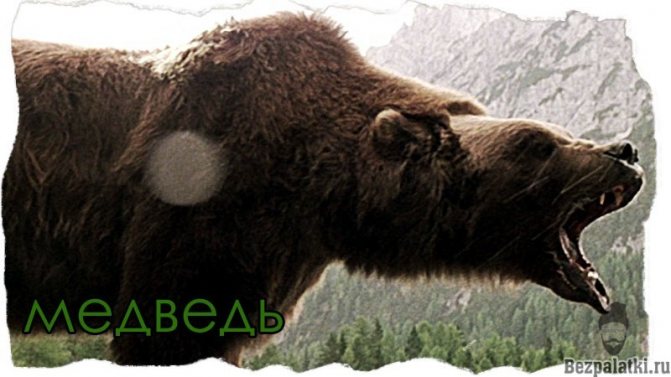
What to do when meeting a bear in the forest?
Try to make as many sounds as possible in the forest in order to warn the animal about your presence in advance. The bear itself does not attack first and if it hears a person, as a rule, it quickly tries to hide.
But still, if you suddenly come face to face with a bear, do not even think about running away from it. From the moment you start to run away, in the eyes of the bear you turn into prey and the animal will inevitably begin pursuit.
The bear, despite its apparent clumsiness, runs very fast and you will not be able to escape from it.
Don't climb trees, bears are great climbers (except big old bears)
Stay calm, slowly back away (do not turn your back), shout loudly. Never look an animal in the eyes, he will perceive this as aggression on your part. Take a jacket or sweater in your hand and lift it above your head, this will increase your size in the eyes of a predator. If all of the above does not help, then pretend to be dead (this requires very, very good endurance).
When a bear approaches you, sniffing you, a smell and hot breath are heard from its mouth. The bear may hit you with its paw, may jump on you with its front paws, etc. As a rule, bears lose interest in such an “enemy” and leave (provided that you lie still).
Always carry a flare or bear spray with you (where there are a lot of bears, it is advisable to put a can of repellent spray in your backpack).
If you see bear cubs in the forest, never approach them, a bear is grazing nearby and she will attack you, 100% protecting her offspring. Don't stand between the cubs and the mother bear.
How to avoid encounters with wild animals in the forest
Before describing the algorithm of actions when meeting a wild animal, I would like to say a few words about the fact that this rendezvous is best avoided if possible. A few tips that one experienced tourist gave us can help with this:
• When moving through the forest, avoid areas overgrown with tall grass and dense bushes; these are the main “daytime” habitats of wild animals. If you see an animal from a distance, do not approach it under any circumstances, do not make noise and carefully walk around it, keeping the greatest possible distance;
• When moving through the forest in a group, you need to make as many sounds as possible - shouting at each other, singing and talking freely - loud noise will force the animal to bypass your company;
• Immediately leave the area where you find baby animals, do not approach them and remember that their mother is somewhere nearby. To protect her offspring, she will attack without hesitation.
What should you do if a wild animal gets in your way? There are several basic rules of behavior in this situation that you need to remember when going into the forest.
Wolf
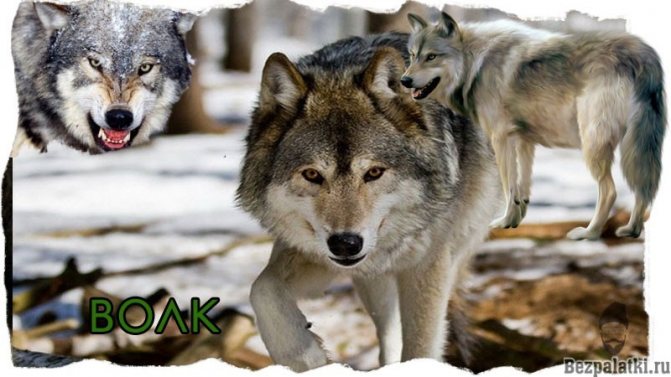
A wolf attack in the forest is unlikely. There have been cases of wolf attacks in winter. In the summer, wolves have enough food in the forest. It is believed that the wolf avoids humans, but there are cases of attacks that have been recorded.
The wolf is much larger than the dog. Wolves calmly eat dogs, without being afraid of them, but dogs are pathologically afraid of wolves.
If you encounter a wolf in the forest, try to climb a tree (the best option). Do not look the animal in the eyes (he perceives this as a challenge and danger on your part). If a wolf nevertheless attacks you, put your hand forward; it is advisable to wrap your hand in a cloth, sweater or jacket so that the animal cannot bite through it. Protect your neck. If you have a knife at hand, strike at the carotid artery (the fur of a wolf is not so easy to pierce), at the body, trying to hit the heart. If there is no knife, strike the nose, eyes, and ridge.
If you are attacked by a moose

Despite the fact that this animal is a herbivore, it is in many ways more dangerous than a bear. Moose are dangerous during the rut or when injured. A wounded elk is very aggressive. At the beginning of summer, moose give birth to their calves. Never approach moose offspring (moose calves). The Moose's attack will be immediate. Moose have very poor eyesight, but their hearing is very good. The elk does not see a stationary person up to 10 meters.
Elk are dangerous during the rutting season; elk rutting in the fall. A male moose may mistake you for a rival and attack.
Signs that a moose is about to attack:
- Follows on your heels (in your direction) and does not turn off
- stomps his feet and wiggles his ears
- shakes his head and roars
How to avoid a moose attack?
Climb a tree (although a moose may be waiting for you and grazing nearby)
If a moose comes towards you, get off its path and speak softly and calmly, as if you were talking to a small child. Do not Cry. Go behind a large tree, the elk may simply lose sight of you. If the elk does attack, then pretend to be dead by curling up in a ball.
How to behave when meeting dangerous animals
Our country is not a region with a high risk of encountering dangerous animals, however, there are also threats here. Danger can await us not only in the deep taiga, but also in the nearby forest. Bear
Meeting a brown bear is not that uncommon. Its distribution area is almost the entire forest zone of the country. It must be remembered that in most cases a bear wants to avoid meeting a person, but if a meeting has already taken place, then you should not try to guess the animal’s mood. Bears have poorly developed facial muscles, and it is impossible to understand what he is up to. If an animal rears up, this can be caused either by curiosity towards a person or by the intention to scare away an uninvited guest. The use of firearms can be a fatal mistake - you most likely will not be able to kill the animal (unless you are a professional hunter), but will only provoke an attack by a wounded and angry animal.
The greatest threat to humans is posed by a female bear if she is with her cubs, as well as an animal that you take by surprise. An animal can see a person as a threat and attack. If a bear approaches, do not run under any circumstances: throw a backpack or other things in its direction - bears are curious creatures - and you can gain precious seconds to leave or climb a tree. If the bear doesn’t lag behind you, then the only thing you can do is fall on your face and freeze - the animal, most likely, will leave without causing serious harm. An encounter with a connecting rod, a bear that has not accumulated enough fat for the winter and has crawled out of its den to hunt, can be extremely dangerous for a person. In this case, there is only one piece of advice - do not walk through the winter forest again.
Boar
A close encounter with a wild boar does not bode well for a person. An adult male has impressive dimensions and weighs about 200 kg. A wild boar can reach speeds of up to 40 km/h, but the greatest danger is its fangs, which can cause serious injury to a person.
The presence of a wild boar can be determined by its specific smell. Usually animals stay in groups: if one individual appears, then there are others nearby. If you notice a female with piglets on your way, it is advisable to move away as far as possible, giving way to the animals.
Until the boar senses danger, it will not attack. But if the animal sees you as a threat and decides to attack, you need to know that the boar always goes straight, and therefore you should retreat behind the nearest tree as quickly as possible, and, if possible, climb it. Most likely, the animal will rush past and never return.
Elk
Elk is one of the largest mammals found in Russia. The weight of an adult reaches 500 kg. An aggressive or frightened animal, only due to its size, poses a serious danger to humans.
The presence of elk in the forest is evidenced by droppings in the form of “peas”, as well as peeled bark at the level of a man’s height. Having noticed a person in the distance, the elk prefers to freeze, waiting for him to pass by.
If you suddenly come close to the animal, then it would be wise to do the same as the elk - freeze in place. Under no circumstances should you make sudden movements or grimace, you should not try to run away - this will only cause aggression in the animal.
The moose will not see danger in a calmly standing person and will quickly leave.
A big mistake would be flirting with a baby moose, as well as being between a calf and a cow moose. Aggression from the female will be guaranteed. If you find yourself in the path of a moving moose, you should know that he is running away in the same direction in which he walked before. The best thing to do in this case is to immediately step aside.
Wolf
A pack of hungry wolves can be dangerous to humans. A solitary animal will most likely look at a stranger from afar and run away. However, you should not show any interest in the wolf, much less demonstrate aggression towards it.
You should be wary of a wolf that has a lowered head, a dull look, matted fur, a tucked tail and drooling - this indicates that the animal is rabid. Wolves infected with rabies are always solitary and try to stay close to their homes. If the animal smells you, then under no circumstances should you run: it is better to slowly retreat back, without turning your back to the animal.
There is a high probability that a rabid wolf will attack. Then it’s worth taking the risk of running to the nearest shelter, since the sick animal is weakened and will not be able to develop high speed. If a wolf overtakes you, then you need to fight back with everything you can get your hands on and call for help - the main thing is not to let the animal knock you down.
Snake
The territory of the former USSR is home to about 55 species of snakes, of which only the viper, epha, copperhead, viper and cobra are dangerous. However, this danger can be minimized if you follow simple rules. You need to know that a snake never attacks first. A snake bites only in self-defense if a person steps on it or takes it by surprise. To avoid an accidental collision with a snake, you need to move, creating enough noise: when you hear footsteps, the snake will crawl away and you will not even know about its presence.
Sometimes the snake itself crawls up to a person while he is relaxing in nature. If you find yourself in such a situation, then do not make sudden movements. After some time the snake will crawl away. If you cannot avoid a snake bite, you need to monitor your well-being. Redness in the bite area, fever, headache and vomiting are symptoms of a poisonous snake bite. In this case, it is optimal to apply a tourniquet, since suction of poison from the wound can only be effective in the first seconds after the bite and, most importantly, seek medical help as quickly as possible.
Shark
The only place in Russia where a person can face a threat posed by a shark is the Primorsky Territory. The Russian waters of the Sea of Japan are home to 12 species of sharks, among which the Great White Shark and the Blue Shark (Mako) are the most dangerous.
To avoid meeting with a terrible sea predator, you need to adhere to simple rules: do not swim in muddy water, refuse to swim at night, do not go into the water if you have bleeding wounds, avoid places favored by fishermen, and if you have already decided to swim, then it is better to do it there where there are a lot of people.
If a meeting with a shark takes place, then try not to panic: the chances that the shark will show interest in you are minimal, but until you begin to attract its attention with your actions. The golden rule of behavior in this case will be: “Hurry up slowly!” It is impossible to “escape” from a shark: firstly, you will awaken its predatory passion, and secondly, it will overtake you in a matter of seconds. You need to swim to the shore with smooth and quiet strokes, if possible without losing sight of the shark.
If the shark still wants to attack, it will make this clear by starting to describe gradually narrowing circles around the victim. The predator will announce the moment of attack by characteristic arching of its back.
When the shark lunges, make a sharp movement, deviating from the course of its attack, then with everything at hand, in extreme cases with your fist, strike it in the most sensitive places - the nose, eyes and gills. There are many cases where, after desperate resistance, a shark abandoned its victim. One thing consoles me. According to scientists, the risk of meeting an aggressive shark is 1:11500000.
Author: Taras Repin
Boar attack

The boar is a rather cautious animal that is afraid of humans. Wild boar attacks on humans are rare, but do occur. A wounded cleaver is very dangerous; it kills everything in its path.
Boars are usually very shy. When they hear extraneous sounds they rush to run away. Some wild boars do not run away, but hurry to lie down in the bushes. Females with cubs are not dangerous. If the female is frightened, she will abandon the young without a twinge of conscience. But it's better not to take risks. Don't chase little piglets.
If you are attacked by a wild boar:
- This is a very fast animal that is difficult to escape from, the best option is to hide in a tree
- The boar is afraid of sharp sounds, whistling, and as a rule, he quickly runs away from such sounds
